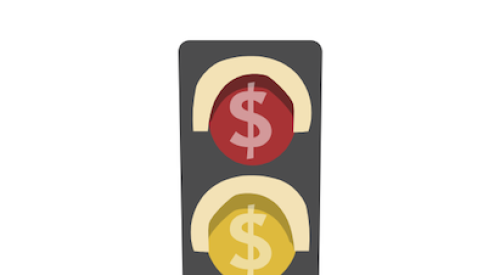My years of experience have taught me that if you lose control of any part of the buyer’s process, you may lose control of the buyer, and that may screw up the sale and cost you high-margin revenue. Therefore, it’s critical that during your interaction with home buyers you introduce a smooth, seamless process through which they personalize their brand-new home, while making that activity a very positive experience. Just like at Starbucks, it’s not about the coffee, it’s about the experience.
Since we cannot manage or improve that which we do not measure, first look at some basic benchmarks for your company as they now exist.
1. Over the last year, what is the approximate dollar amount (on average) that your home buyers invested in options and upgrades?
2. What is the approximate percent of sales price of the home purchase (on average) that a customer spends on options and upgrades?
I guarantee that whatever your current numbers are, they can be increased by employing an effective buyer-selection process and strategic options selling system. Doing so not only provides an opportunity for profitable options and upgrade revenue, ranging from 25 to 45 percent, it also assures complete and accurate selections are available to production quickly, and improves the consistency of both quality and product. In addition, it allows the buyer to put the options into their mortgage.
There are essentially two formats by which to present personal choices and options: either the new-home salesperson does it as part of the home sales process, or a design studio staff member does it during the design selections process. If your company employs the former approach, keep in mind that it takes the salesperson away from their primary objective, which is to sell more homes. In addition, when employing this approach, the gross option sales numbers are typically not as high as when accomplished through a design center (except for structural options).
On the other hand, a design center (in any format) creates a more relaxed atmosphere for the customer and provides the opportunity to sell more options and upgrades, generating more revenue. Also, it frees up the on-site salesperson’s time to sell more homes. An effective design studio can be accomplished in as little as 1,000 square feet; size is not as important as layout and functionality.
Think retail
Regardless of the format you currently utilize, create a seamless customer process and positive buying experience.
First off, think like a retailer. It’s not necessarily about how much money an option costs, rather how little per month it is. With interest rates at an all-time low (approximately $5 or less per month per thousand borrowed), the customer would be wise and should be encouraged to consider putting all that the bank will allow into their brand-new home — in particular, durable and lasting features such as granite countertops, crown molding, hardwood floors, etc. For example, $10,000 of options would be approximately $50 per month.
Other best practices include:
• Be open for the convenience of the customer. That means nights and weekends.
• Consider making design center/selections appointments available on designated evenings or Saturday hours.
• Schedule a “preview night” once or twice a month for the purpose of the customer casually going through the design center to see and experience what is available prior to their first scheduled appointment. It’s far more efficient to spend an hour with five buyers at a time than it is to spend one hour each with five individual buyers.
• Remember, home buyers shop using the process of elimination. Therefore, the more information they have to study ahead of time, the less time they will spend in the design center. This gives the customer an opportunity to narrow their list down by eliminating things they know they don’t like, want, or need.
• Provide the customer with a catalog of included features, options, and upgrades that are available in advance of their scheduled first meeting at the design center.
• Bundle options. There are multiple advantages to bundling. First off, you will no doubt sell more options and upgrades if they are part of a “special package” with the “savings” clearly shown. In addition, it makes it more difficult for customers to comparison shop. And production will find it easier to facilitate options when they’re packaged.
• Demonstrate options appropriately in your models. To avoid confusion or misunderstanding, all references to models should list all optional features as shown. In each model, display an appropriately design placard to put on an easel and place in the foyer of the model that states: the model name, number of rooms, key features, price range from lowest to highest, exact cost of the model (with options), and a list of the options in the model.
Sales advice
Create a culture where all involved are encouraged to learn how to sell options and upgrades and luxury features. Here are some fundamental sales tips:
• It is critical to have the mortgage approved before establishing the first meeting at the design center or with the salesperson to make selections and review options.
• Teach the design center staff members how to sell options and upgrades and compensate them based on a targeted-compensation model.
• Train your sales team and design center employees on the proper terms when interfacing with buyers. Here are a few to consider*:
Take some time to focus on how to improve your options sales. Remember, it is not what you are currently selling that matters. Ask yourself: Doing what we are presently doing, the way we are presently doing it, how much option sales and high-margin revenue are we missing, and why are we missing it?
Bob Schultz is president and CEO of Bob Schultz & The New Home Sales Specialists, a management consulting and sales firm based in Boca Raton, Fla. Schultz is the author of two best-selling books, The Official Handbook for New Home Salespeople and Smart Selling Techniques, and was named a Legend of Residential Marketing by the NAHB. He can be reached at bob@newhomespecialist.com.













